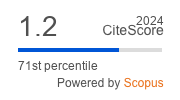The Role of Explicit Instruction of Interactive Metadiscourse Markers in Iranian EAP Learners’ Reading Comprehension
Keywords:
interactive metadiscourse markers, reading comprehension, EAP learners, explicit instruction.Abstract
This research was conducted to investigate the role that explicit instruction of interactive metadiscourse markers plays in Iranian EAP learners’ reading comprehension performance. To this end, 36 students of business management in intermediate level of English language proficiency, both male and female, were asked to participate in this study. They, subsequently, were divided into two groups of equal size, that is, control and experimental. Prior to presenting the treatment to the experimental group, all the participants were given a reading comprehension test. Then, the learners in the experimental group were explicitly taught interactive metadiscourse markers in 10 allocated sessions. Meanwhile, students in the control group of the study were taught through the typical method of the university. Afterward, the students of both groups were given the previously used reading comprehension test again. Statistical analyses of the t-test revealed that those in the experimental group outperformed significantly in the post-test phase of the study (p<0.01). Therefore, it can be inferred that explicit instruction of interactive metadiscourse markers has the outstanding beneficial role in EAP learners’ reading comprehension.
References
- Ann, S. (2011). As I was saying: how and why to teach discourse markers. The Busy
Teacher Library. Retrieved from http://www.busyteacher.org/10076-how-and-why-to-teachdiscourse-markers.html - Camiciottoli, B. C. (2003). Metadiscourse and ESP reading comprehension: An
exploratory study. Reading in a Foreign Language, 15(1), 28–44. - Cheng, X., & Steffensen, M. S. (1996). Metadiscourse: A technique for improving
student writing. Research in the Teaching of English, 149–181. - Crismore, A. ( 1989). Talking with Readers: Metadiscourse as Rhetorical Act. New
York, NY: Peter Lang. - Crismore, A., & Abdollehzadeh, E. (2010). A review of recent metadiscourse studies:
The Iranian context. Nordic Journal of English Studies, 9(2), 195–219. - Crismore, A., Markkanen, R., & Steffensen, M.S. (1993). Metadiscourse in persuasive
writing. Written Communication, 10(1), 39–71. doi: 10.1177/0741088393010001002. - Dastjerdi, H. V., & Shirzad, M. (2010). The Impact of explicit instruction of
metadiscourse markers on EFL learners' writing performance. The Journal of Teaching Language
Skills (JTLS),2(2).154–175. - Davaei, R., & Karbalaei, A. (2013). Interpersonal Metadiscourse in Compositions
Written by Iranian ESP Students. European Online Journal of Natural and Social Sciences, 2(2s),
pp-291. - Dhieb-Henia, N. (2003). Evaluating the effectiveness of metacognitive strategy training
for reading research articles in an ESP context. English for Specific Purposes, 22(4), 387–417. - Erfani, S. M., Iranmehr, A., & Davari, H. (2011). Deepening ESP reading
comprehension through visualization. Journal of Language Teaching and Research, 2(1), 270–
273. - Halliday, M.A.K. & Hasan, R. (1976). Cohesion in English. London: Longman group
Ltd. - Hudson, T. (1991). A content comprehension approach to reading English for science
and technology. Tesol quarterly, 25(1), 77–104. - Hyland, K. (2000). Disciplinary discourse: Social interactions in academic writing.
London: Longman. - Hyland, K. (2001). Bringing in the reader: Addressee features in academic articles.
Written Communication, 18(4), 549–574. - Hyland, K. (2004). Disciplinary Interactions: Metadiscourse in L2 Postgraduate
Writing. Journal of Second Language Writing, 13,133–151. - Hyland, K. (2005). Metadiscourse: Exploring interaction in writing. London:
Bloomsbury Publishing. - Parvaresh, V. & Nemati, M. (2008). Metadiscourse and Reading Comprehension: The
Effects of Language and Proficiency. Electronic Journal of Foreign Language, 5(2), 220–239. - Tajeddin, Z. & Alemi, M. (2012). L2 Learners’ Use of Metadiscourse Markers in
Online Discussion Forums. Issues in Language Teaching, 1(1), 93–121. - Vande Kopple, W. J. (2002). Metadiscourse, discourse, and issues in composition and
rhetoric. In F.Barton & C.Stygall (Eds.), Discourse Studies in Composition (pp. 91–113).
Cresskill, NJ: Hampton Press. - Williams, J. M. (1981). Ten Lessons in Clarity and Grace. University of Chicago Press,
Chicago.







 Creative Commons «Attribution» 4.0
Creative Commons «Attribution» 4.0